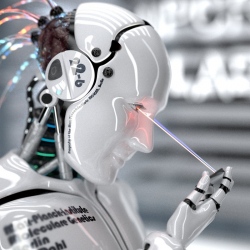
A humanoid robot is helping a team of computer scientists map infants’ transition from meaningless babble to understanding words and eventually learning to talk.
Named DeeChee, the three-foot-tall humanoid machine is designed to resemble a baby as part of its learning process, according to a report on Wired.com.
“Our work focuses on early stages analogous to some characteristics of a human child of about six to 14 months, the transition from babbling to first word forms,” said the scientists led by Caroline Lyon of the University of Hertfordshire, in a June 13 Public Library of Science One study.
With DeeChee, the researchers "quantify" the transition from babble to recognizable word forms, through statistical links between sound frequencies and the robot’s performance.
Even the humanoid design of the robot plays a part in the robot’s learning process, as researchers think some cognitive processes are shaped by the bodies in which they occur.
Embodied cognition
DeeChee’s case is a study of embodied cognition, where one learns the building blocks of language through sensitivity to the frequency of sounds.
Lyon said robot embodiment can generate reactions that disembodied software does not.
She pointed out that while babies learn by listening, the specific processes of this learning cannot be replicated by a human talking to a computer screen.
“Learning needs interaction with a human, and robot embodiment evokes appropriate reactions in a human teacher, which disembodied software does not,” Lyon said.
On the other hand, Wired.com said DeeChee – at least this version – does not think like a human baby yet as it does not have the software for it.
Lyon declined to say if this process of learning could be combined with higher-level cognitive programs to produce something like "consciousness."
“First we have to ask, ‘What is consciousness?’” she said
